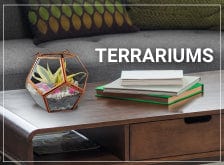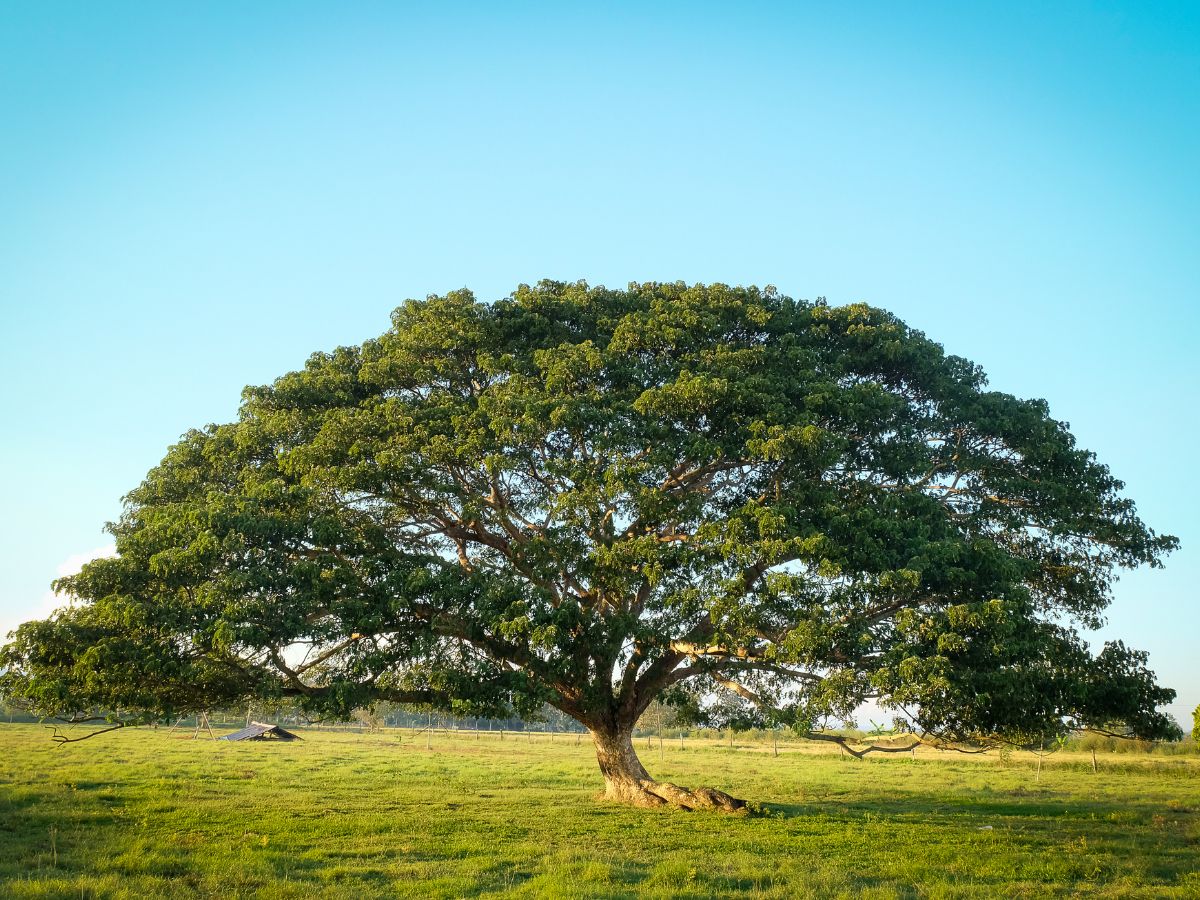How to Grow
Samanea Saman (Monkey Pod Tree) – Facts, Benefits, Care & How To Grow
Looking from a distance, those big trees with huge canopies seem like a vast umbrella covering the world. Don’t they?
Countless birds form their nests, romances blossom, pleasantries are exchanged, meals are shared, some people sleep, and so many countless day-to-day activities take place under a shady tree.
Apart from weaving multiple stories, a big shady tree in a locality also means a safe landmark to meet or understand directions.
Monkey Pod Tree or Samannea Saman or simply Saman is one such tree that is known for its enormous shade.
But providing shade is not the only purpose it serves.
Saman is a tropical hardwood tree that is used for making furniture, curing stomach aches, treating blood pressure, etc. It is also used as a laxative in some parts of the world.
And do you know the best thing about Saman?
According to studies, this tree aids in the evapotranspiration process, which lowers temperatures or creates a cooler environment.
( https://www.sciencedirect.com/science/article/abs/pii/S1618866718304345)
In this blog, we’ll cover
- Interesting facts about Saman or Monkey Pod tree
- Benefits & Uses of Saman Tree
- How to grow a Saman or Monkey pod tree?
- Gardening & care tips for Saman tree
Eager to learn more? Let’s get started.
Interesting facts about Saman or Monkey Pod tree
- The saman tree is native to Central and South America. It is found extensively in Mexico, Bolivia, Peru, Brazil, and Southeast Asia
- A monkey pod or saman tree has diamond-shaped leaves.
- Although it can withstand several months of dryness, this tree also thrives in locations with regular rainfall
- Because the tree is semi-deciduous, its leaves will eventually fall off but only temporarily which typically happens during a dry season. Once there is enough moisture, the tree refoliates.
- Seasonally, flowers bloom near the conclusion of the dry season or during the height of the spring. Monkeypod blossoms have a puffy, powdery appearance. They have a pink hue.
- The fruit's pulp and seeds are both edible and have a flavour akin to licorice.
- A saman tree typically lives between 80 to 100 years.
- Do you know that the Hitachi Group has used a massive monkeypod tree in Hawaii as its company emblem since the 1970s?
- The wood of monkey pod trees is moderately sturdy, and hence some of them are used in boat building
- It may startle you to learn that the bark of this tree is an excellent source of gum and resin
How can you benefit from the Saman tree?
Samanea saman or Monkey Pod tree has many benefits and uses. Read about some of them below: -
Provides shade
One of the primary benefits of the monkey pod tree is its enormous shade. They need a lot of space to grow, and as they do, they provide us with a big canopy. Thus, it is the ideal tree to be planted beside highways or in urban landscaping. This large tree with a large canopy is planted not only for human and animal comfort, but also along coffee, tea, cocoa, or vanilla plantations. Since such crops need both sunlight and shade.
Value for hardwood
The hardwood timber from monkeypod trees is prized for its durability. The wood is easy to carve and less likely to dry out and shatter due to its straight grain and gritty texture. This tree has a large trunk, which is why it's perfect for making furniture like coffee tables, chairs, and dining tables.
Nourishes soil
The nitrogen in the soil is improved by the monkeypod tree. Its leaves, blossoms, and seed pods all fall to the ground where they rot and produce nitrogen-rich material. This type of tree is referred to as "nitrogen fixing" by botanists since it feeds and stabilizes the soil.
Edible value for humans and livestock
The fruit's sticky, licorice-flavored pulp is a favorite among kids. This fruit pulp is used to create a beverage with a tamarind-like flavor. The pods are superior cattle feed since they contain 13–18% protein. Monkey pod trees are raised throughout Asia to supply livestock with protein.
Treats stomach cancer, diarrhea, & sore throat
The monkey pod tree is used in a variety of ways throughout diverse societies. In Venezuela, a unique root decoction is prepared that treats stomach cancer. Some people believe that chewing the astringent-like seeds may cure sore throats. Diarrhea is treated in the Philippines with a decoction made from the inner bark and fresh leaves.
Craft ideas
Have you ever heard of the monkey pod bowls of Hawaii? They are famous craft items carved from the wood of this tree. Also, the seeds of the fruit are cleaned and dried to make other craft items like necklaces.
Making hats and paper
The specific fibres needed to manufacture paper are present in the wood of the saman tree. Also in the Philippines, wood shavings from this monkey pod are used to make hats.
Fuel wood
The trunk and branches of rain trees are used to make firewood and charcoal in areas where they are not needed for building or carving purposes.
Reduces noise pollution
This monkey pod tree is very tall and has deep, dense branches and leaves. This drastically reduces noise pollution.
How to grow a Saman or Monkey pod tree?
- First of all, you have to arrange some seeds of the saman or monkey pod tree. Buy it online or go to a local shop nearby. Or you can lay your hands on some fruits of this tree and get the seeds from there.
- Remove the pulp and clean the seeds well by scrubbing lightly and carefully under lukewarm water
- Fill a small bowl halfway with hot water (around 80 degrees Celsius).
- Keep the seeds in this bowl of warm water
- Rest for two minutes, and then give it a stir
- Fill another bowl halfway with lukewarm water (30 to 40 degrees Celsius) and add the seeds. Keep it in this water for a day.
- At this point, prepare the soil. Potting soil, sand, and compost should be mixed in the soil in a 3:1:1 ratio
- Take a nice, big or medium-sized planting pot or container and fill it up with this soil mix, followed by watering
- Place the soaked monkey pods or saman seeds in half an inch of deep soil after a day. Cover up lightly and choose a warm area to place the pot.
- Water the soil, but remember: don’t make the soil soggy
- The seed will germinate in 10 days
- Once it germinates, you must allow the seedling to reach a height of 8 inches before planting it outdoors. This process will take 3–5 months.
- After germination, place the pot in a warm, sunny location for faster and better growth
How to take care of a Saman tree easily?
Taking care of a monkey pod tree is easy. Just follow the instructions mentioned below.
Water
For the first three months, it is advised to water the plants two or three times every week, just in case it doesn't rain at all. Remember that the soil around the roots must be moist but not muddy or soggy.
Mulch
To help the soil around the tree stay hydrated, you can cover it with an organic mulch layer that is 2- to 3-inches deep.
Fertilizer
When you fertilize the monkey pod tree, its health improves. The flowers and fruits of the tree also develop and increase in quantity and quality. Take 10-10-10 fertilizer and sprinkle it on the soil around the tree. Each foot of tree height requires half to one tablespoon of this fertilizer. The best time to fertilize the saman tree is late winter or early spring.
Pruning
An essential part of keeping a Saman tree healthy is pruning. The optimal time to prune the monkey-pod tree is after the blooming period has passed, which is in late spring or early summer. Prior to utilising the cutting instruments on the tree, clean them with a disinfectant. For small branches that are less than half an inch thick, use hand pruners. For branches that are one and a half to two inches thick, use lopping shears. Use a pruning saw for branches that are greater than 1.5 inches thick.
Sunlight
You have always seen a monkey pod tree in pastures, along the roadside, or even in parking lots, right? That means it is a sun-loving tree. It requires plenty of sunlight to grow abundantly. So find the sunniest location in your garden and dedicate that to this tree.
Temperature
A monkey pod tree is a tropical tree, and thus warm, hot, and humid weather is what it requires. It will thrive well at a mean annual temperature of 20–35 degrees Celsius.
Soil
It grows well in light and heavy soils, meaning sandy or clay soils. The soil pH can range from neutral to moderately acidic.
FAQ
Why is it called a monkey pod tree?
The scientific name of the monkey pod tree is Pithecellobium. Pithecellobium is a Greek word that means "monkey earring". Perhaps that’s why this name came into common usage.
How long do monkey pods last?
The saman, or monkey pod tree lives for 80-100 years.
What are monkey pods used for?
Monkey pod trees are mostly used for making furniture like tables, benches, chairs, etc. Besides, it also has other medicinal, culinary, and craft uses.
What type of wood is monkey pod?
Monkey pod is a hardwood tree.
Is monkey pod sustainable?
Yes, the monkey pod tree is sustainable because it grows faster than other trees.
Ref Links:
https://homeguides.sfgate.com/obsessively-clean-gadgets-13771620.html
https://home.howstuffworks.com/lawn-garden/professional-landscaping/monkey-pod-tree.htm
https://www.gardenguides.com/92487-sprout-monkey-pod-rain-tree-seeds.html
https://homeguides.sfgate.com/care-monkeypod-85802.html
https://www.healthbenefitstimes.com/rain-tree/
https://www.sciencedirect.com/science/article/abs/pii/S1618866718304345



